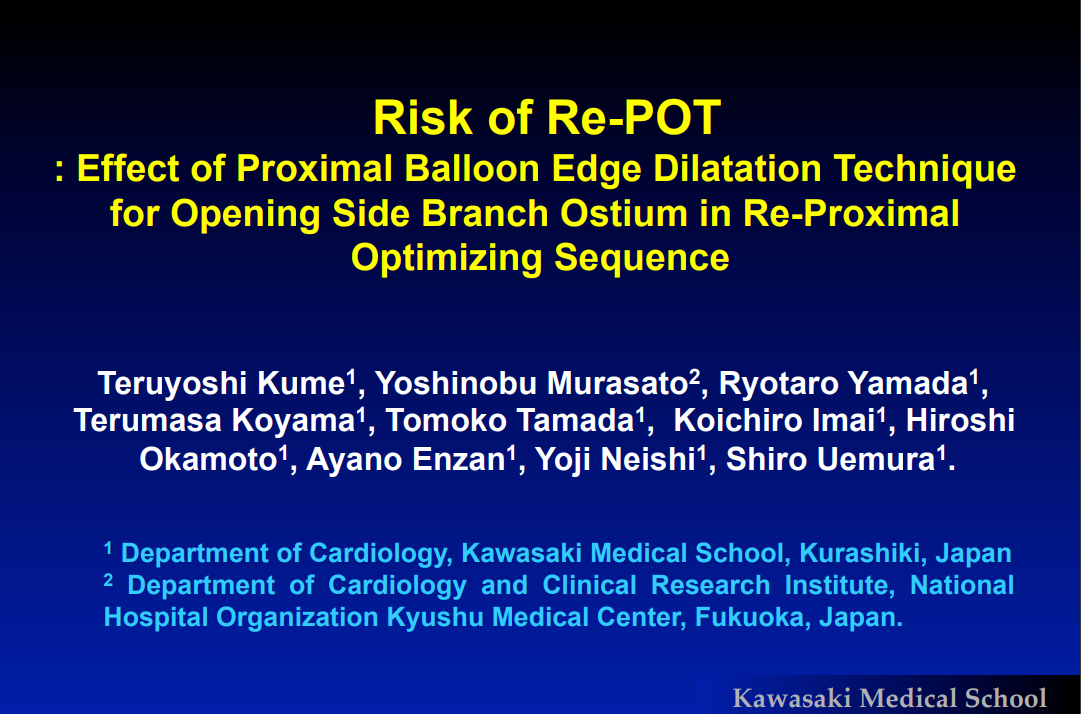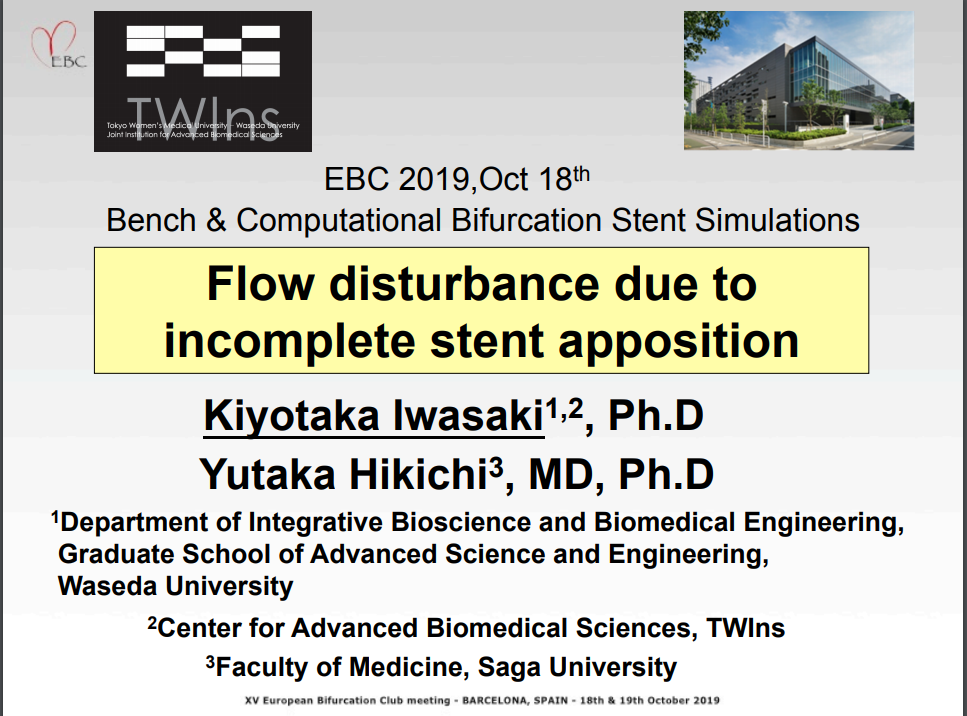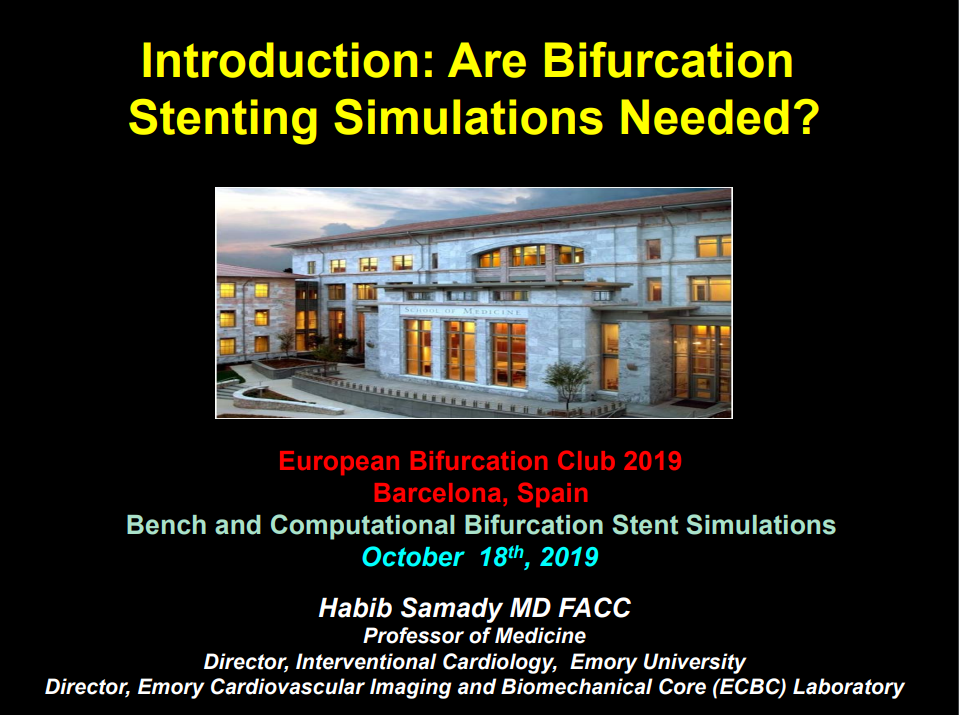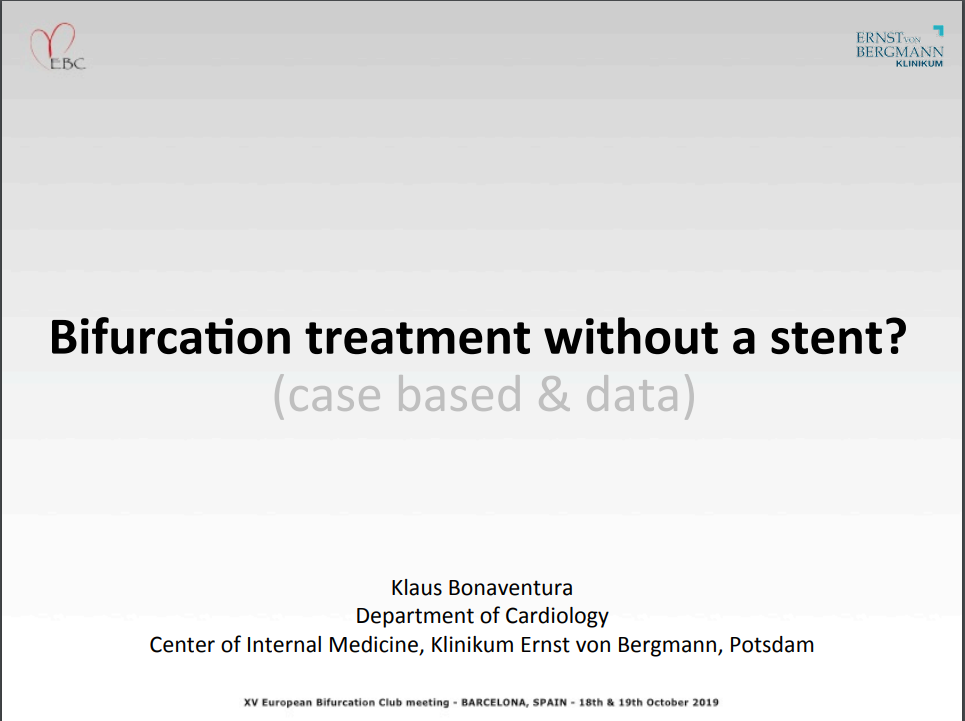European Bifurcation Club 2019, EBC 2019 - Barcelona, Spain
BENCH & COMPUTATIONAL BIFURCATION STENT SIMULATIONS
Flow disturbance due to incomplete stent apposition
Author: Kiyotaka Iwasaki, PhD, Waseda University, Japan
BACKGROUNDS
In left main bifurcation, difference between LMT (proximal) and LAD (distal) diameters is lager compared with that in other bifurcation. Stenting without POT would induce incomplete stent apposition at proximal bifurcation side.
KBT is recommended to open overlaying stent of side branch ostium especially in LM Bifurcation, because the overlaying jailed stent will potentially occupy larger at LCx and become a source for future thrombus formation, neointimal formation, and late narrowing.
Although stent-size selection based on distal diameter is recommended, there is a dilemma that currently available stents have smaller expansion capability when stent-size is chosen based on distal stent-landing diameters in LAD.
SUMMARY AND TAKE HOME MESSAGES
POT and KBT are mandatory to reduce incomplete stent apposition. Otherwise, abnormal slow flow regions were induced at left main trunk and/or behind jailed stent crowns during the cardiac cycle, which would be a potential cause of thrombus formation and may necessitate life-long DAPT.
Stent-diameter selection based on the proximal- vessel diameter is feasible to preserve stent platform design at LMT and bifurcated region, and to
reduce jailed stent crowns at LCx ostium.
Three-times kissing balloon inflation is feasible for reducing jailed stent crowns.










